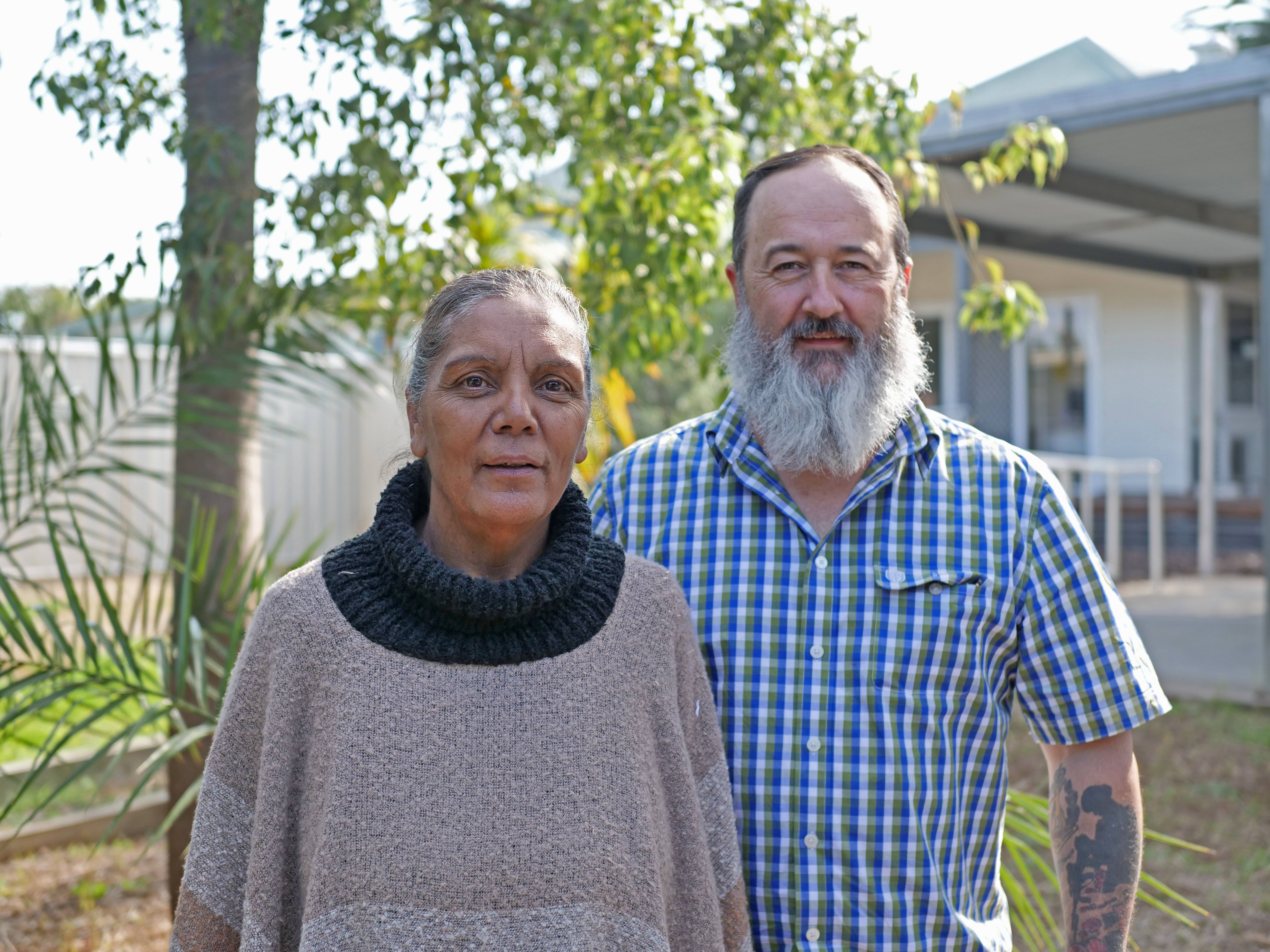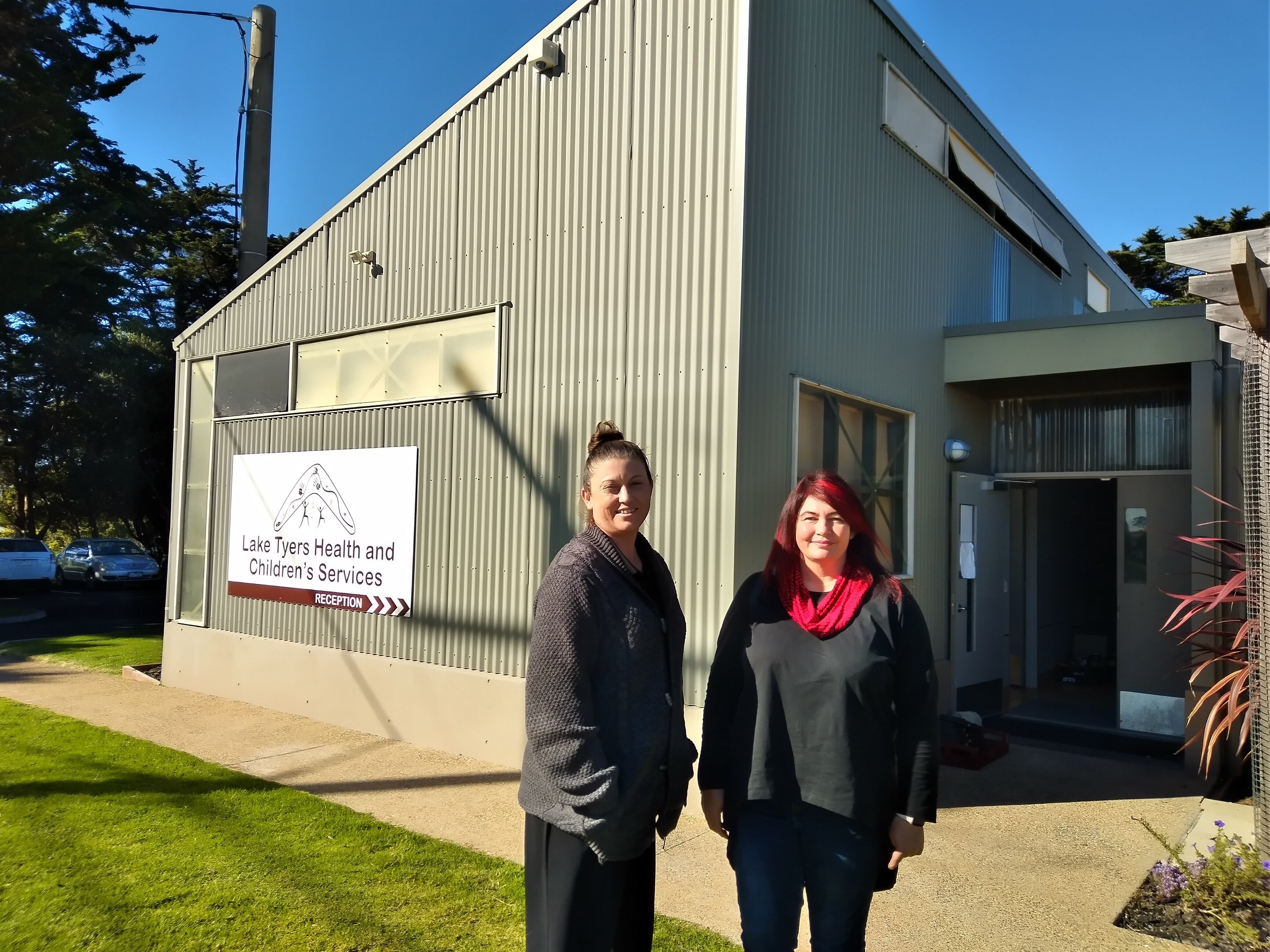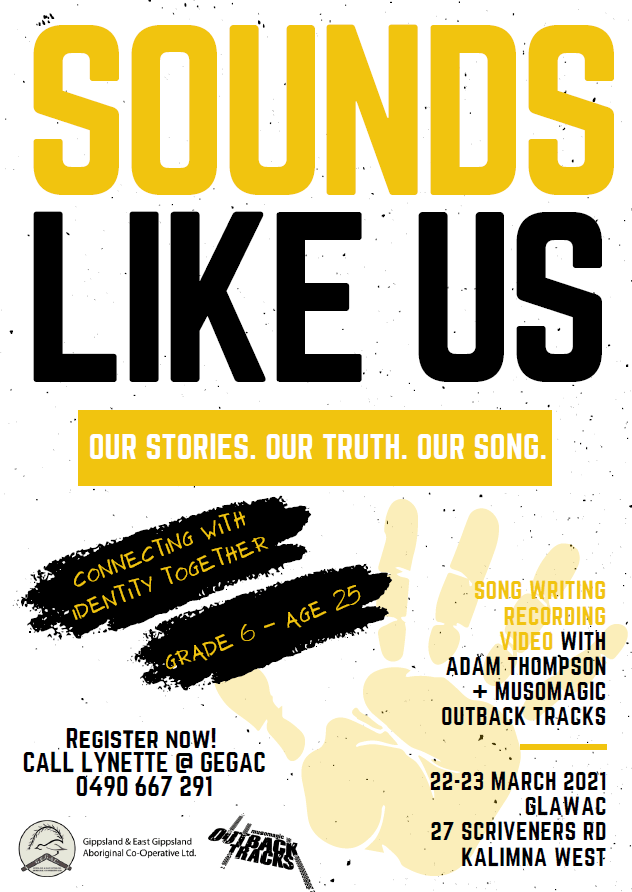- Date:
- 19 Aug 2021
Acknowledgement of Country
BRV proudly acknowledges the First Peoples of Victoria and their ongoing strength in practising the world’s oldest living culture. We acknowledge the Traditional Owners of the lands and waters on which we live and work and pay our respects to their Elders past and present.
Introduction by Carmel Flynn
Stories of Bushfire Recovery - Aboriginal Culture and Healing focuses on Aboriginal peoples’ recovery following the 2019-20 Eastern Victorian bushfires. Events like bushfires have a significant impact on Aboriginal Victorians. Pre-existing inequality and historical intergenerational trauma are further complicated by the impact that bushfires can have on Country and cultural heritage.
Relationships with the land remain fundamental to the identity and way of life for Aboriginal and Torres Strait Islander people.
Exercising self-determination is crucial for Aboriginal people, families, communities, businesses, and Traditional Owner groups throughout their recovery journey. Our role is to support Aboriginal communities in recovery and to guide Bushfire Recovery Victoria (BRV) to embed Aboriginal self-determination in its process and outcomes.
Aboriginal Culture and Healing is one of our five pillars of recovery. BRV’s introduction of this recovery pillar is the first time in Australia that a dedicated line of recovery-focused on Aboriginal community affected by a major disaster has been established.
It stands alongside traditional recovery pillars of health, economy, natural environment, and infrastructure, and supports projects led by Aboriginal community organisations and Traditional Owner groups.
This pillar structure has helped assist Aboriginal community participation in recovery planning, design, delivery, and evaluation; and establishing a stronger Aboriginal voice in government decision making. One of the ways that this has been achieved is through Traditional Owner-led projects that support the recovery of cultural heritage.
Each of the projects profiled in this booklet received funding under the Bushfire Recovery Grants for Aboriginal Communities. These projects highlight the importance to acknowledge, respect and promote Traditional Owners and Aboriginal communities’ collective knowledge, and their connection to their Country.
Carmel Flynn
Acting Chief Executive Officer
Bushfire Recovery Victoria
Empowering the next generation to better manage Country
A new project from Gunaikurnai Land and Waters Aboriginal Corporation (GLaWAC) is creating employment opportunities for young people following last summer's bushfires.
GLaWAC recognises Gunaikurnai people cannot be healthy when Country is sick, and the project focuses on increasing community involvement in bushfire recovery.
There are four components to the project, all happening at various stages. Land monitoring works have commenced, as has the project’s employment program, to get people back out on Country.
Revegetation work has begun, and the community cultural healing and engagement events have had to be delayed due to COVID-19 restrictions.
Cultural research and surveys by GLaWAC’s cultural heritage team have also commenced.
Roger Fenwick, CEO of GLaWAC says Aboriginal self-determination in the bushfire recovery space is about community making a difference and feeling like they are. Roger says:
“To me, it’s important to have community connected to the decision-making process and to be able to achieve an outcome. That also comes with responsibility.”
GLaWAC’s young Bushfire Recovery Crew are excited to be connecting with their culture and learning about the land. The project is helping them connect to their cultural roots and Country to learn more about managing biodiversity for cultural values. And importantly, it’s helping healing begin.
Roger says that they have been able to find Potoroos again.
“We didn’t think we’d find them. That’s a good sign because it means the country is healing.”
This project is building on collaborative approaches. The newly recruited young bushfire crew is working with ecologists to manage biodiversity in line with cultural values. Using their abilities to read Country, they are learning new monitoring techniques and expanding their awareness of different landscape to assist in the healing process.
The stories and memories from different parts of the burnt landscape have created a natural history knowledge and literacy that is now able to be recorded using cultural and scientific techniques. This will enable GLaWAC to maintain Gunaikurnai environmental and cultural values by deciding how and when to manage Country. The project is creating employment opportunities for young people as well as allowing them to get out on Country and work in the bush.
“I’m very proud of the efforts and skills of our staff and the advice our community leaders have made in recovering from both COVID-19 and the bushfires. I am proud of GLaWAC achieving positive outcomes for future generations."
Gundigan creates a new way of working together

Moogji Aboriginal Council’s project, Gundigan, will get their Traditional Owner groups involved in land management. A Monero, Yuin & Ngarigo Elder from Cann River, Aileen Mongta-Blackburn says:
“Gundigan means ‘leaves of trees. The name Gundigan was chosen for this project because you could see the burnt leaves and the new life coming back after the fires.”
Gundigan has prioritised relationship building with government agencies to ensure Traditional Owner groups are more actively involved in land management.
Ninety-three percent of crown land east of the Snowy River is managed by the government, so for Aileen it is important strong relationships are established.
Gundigan is embedding knowledge and practice into more collaborative management of the land, and this retains cultural integrity.
“We’re really keen that at the end of these projects we’re inside managing Country with the agencies and not sitting on the outside of the burnt fence".
To Aileen, it’s clear healing from the fires is not as simple as rebuilding a bridge or looking for regrowth amongst the trees. She continues:
“It’s about healing together."
Aileen says they’re making good progress, but there is still a long way to go. She says it is great to see all parties being able to have a seat at the table and that everyone is being respectful of each other’s needs.
“That’s all we can ask for at this early stage. We’re thankful for this opportunity and we’re looking forward to getting on with the recovery process, which in our culture is generational.”
LEAHA demonstrate Aboriginal self-determination

Lakes Entrance Aboriginal Health Association (LEAHA) are building a strong and healthy future for their community. Their projects will support re-engaging the Aboriginal community and building capacity in the next generation.
Paula Morgan, CEO of LEAHA says:
“LEAHA is thankful to work with BRV and for funding because it is quite flexible. LEAHA will work closely with community on the ground to embed real self-determination.”
The LEAHA team will walk alongside the Aboriginal community to support them to reconnect and gather with one another after being evacuated for the bushfires and later impacted by COVID-19 restrictions.
The LEAHA staff have been visiting community members at their houses to keep them connected, delivering health and wellbeing packages to the more vulnerable community members. Paula says:
“We have so many ideas and want to work collaboratively with our community to build events and activities that will help heal our mob, we know that the only way to do this effectively is to work alongside our people."
LEAHA’s main priority is to provide health and wellbeing services to their community to maintain good health. LEAHA also has a strong focus on building the capacity and skills of its staff. Capacity building the next generation is important to Paula and she’s thankful that she is able to do this in her position at LEAHA.
One of the biggest project milestones has been the appointment of a Bushfire Recovery Coordinator. Paula says:
“This opportunity for a young Aboriginal girl to step up into the Bushfire Recovery Coordinator position is fantastic.
"Our new coordinator has stepped in and she’s doing wonderfully, she’s been with us for about three months now. Her focus is supporting our mob to come together in a safe space – somewhere they can feel safe to talk openly about their needs. We just have to be there to listen. Often, the community knows the answers. Our recovery has to continue to be really community-led and focused.
“I see this project as an example of Aboriginal self-determination in the recovery space. It’s great to be able to provide an opportunity for a young Aboriginal woman to work with our mob and lead the disaster planning for future events.”
Healing needs to happen on Country

Nindi Ngujarn Ngarigo Monero Aboriginal Corporation have begun work to help Ngarigo Monero people heal by getting back on Country to reconnect with culture, the land and each other through a series of camps and training workshops.
Doris Paton is a proud Ngarigo Monero woman and the Executive Officer of Nindi Ngujarn Ngarigo Monero Aboriginal Corporation.
The most senior elder women of Ngarigo Monero have been advocating for the rights of their people for years, explains Doris.
“The Elders feel for their country from the bushfires because they’ve lived on it and when it comes to this funding, they’re thrilled to bits for the mob.”
Nindi Ngujarn’s primary focus is to look after the interests of the Ngarigo Monero people, their knowledge, their culture, their connection to places and to pass that down to future generations so it is not lost.
“Being able to look after Country and having that responsibility to look after Country is something that we take seriously. We have built a mutually respectful relationship over many years with other agencies. It is important that they recognise Aboriginal people, and their knowledge, which can help us improve management of our country collaboratively.”
Doris explains recovery is an ongoing process, but delays caused by COVID-19 have meant the team have only begun phase one of the project. They are now getting people out to begin mapping, which has already found new culturally significant sites for documentation. Doris says:
“Knowing Country, our connection to it, how it was affected by the fires and being able to look after it through bushfire recovery, is healing in itself.
“Our Elders are getting older, and the next generation need to be shown Country by the Elders. The grants Nindi Ngujarn have received from BRV and DELWP are allowing this to happen.”
Doris says there is a sense of excitement for the younger generation to get back on Country and learn from Elders and family by reconnecting to places and culture.
“The young ones really want to embrace their responsibility to Country, and this funding has enabled us to facilitate these workshops for them to do that.”
During the camps, people will reconnect, learn about cultural knowledge, including language, identifying cultural artefacts, and sharing stories about the mob, kinships, and connection to the land.
Journey to Autonomy

Lake Tyers Health and Children’s Services (LTHCS) is focusing on giving their community skills, knowledge, and greater autonomy over their recovery planning.
During the bushfires, Lake Tyers community members were evacuated. The fires quickly encroached on the community and many people faced challenges to evacuate due to the high rate of immobility, lack of communications, restricted vehicle access, isolation, and illness. Some families were separated and were unable to find suitable accommodation in neighbouring towns.
Mikila Sharkie, Operations Manager at LTHCS says the community is now gaining back a sense of control.
“They are able to feel empowered with a plan and others will know their plan, so they feel supported.
“The fire was the closest it’s ever been in living memory for a lot of the people out here. The sky was almost black and there was an orange glow over the water.”
The first community get-together was a lunch held by the Health Centre and community at the end of January 2021. Mikila explains that one of the biggest learnings from this session was a need for clearer, planned and more effective communication.
The LTHCS are using some of the funding to purchase a digital community notice board that will display current information during an emergency. Mikila says:
“This sign will be invaluable during an emergency. It will be linked to the website so we can update it from anywhere to keep it current.”
The project has also assisted individual households to develop emergency plans. A survey will be conducted in the coming months to customise these plans to define responsibilities during an emergency.
Community packages are being put together and will be stored at the LTHCS buildings ready for future events. Community buildings are being improved and repaired for future events. The funding has enabled the purchase of a water tank and fire pump to protect community members who will use the Health Centre as a refuge in an emergency.
“I think this has been well received by the community. They are happy their wishes are being listened to and the issues they are raising are being heard. That is important for us, as we are driven by the community."
Strong Alone, Stronger Together

Gippsland and East Gippsland Aboriginal Cooperative (GEGAC)’s project Strong Alone, Stronger Together is about cultural connection and representation. They are providing social and emotional support through engagement activities.
Jamie Williamson, CEO of GEGAC says:
“It is counselling through activity, that is the best way to explain it.”
Physical health and wellbeing programs have been designed to help people engage in conversations about the trauma associated with bushfires. The programs have been designed for youth and different genders.
Jamie explains:
“We have three streams: music, art and physical activity. We ran a men’s workshop. It was an ad-hoc jam session as a part of our music therapy. Meaningful conversations were had around identity.
“One of the biggest questions we’ve heard being asked was ‘Who are we as Aboriginal men living in East Gippsland after we’ve been through all of this, 'who are we?'”
This led to the creation of another program Past, Present and Future. Jamie says:
“The Elders will represent the past. They will build on the conversation around identity, which helps address the trauma from bushfires. Based on that, we will go into the present. Then we will bring in the youth, the future.”
The next steps for GEGAC will be to bring Elders into a place they feel comfortable where they can tell their stories. The aim is to develop a joint understanding of identity to share with the next generation.
Jamie says they plan to revisit these groups as they grow into the next generation.
“Cultural identity and responsibility are being defined again. It was lost.”
GEGAC plan to run community bushfire management and prevention activities in the lead up to the bushfire season. Jamie hopes this will increase the community’s resilience, address wellbeing concerns and continue to support their healing.
Jamie says GEGAC appreciates the funds which have allowed them to address the concerns of the community.
Healing through connections and caring for culture

Taungurung Land and Water Council (TLaWC)’s project Taungurung Fire Story: Healing through connections and caring for culture, focuses on sharing traditional ecological knowledge from Taungurung Community & Elders.
TLaWC Executive Manager of On Country Operations and Taungurung woman, Sherryn Antonopoulos, says the project explores how healing can take place in different ways after a fire. Sherryn says:
“It’s not just about the healing of land, it’s about Community, Elders and the personal healing of people. Part of our responsibility is to be looking after our country and ensuring that we protect our cultural heritage.”
The summer bushfire had a flow-on effect on cultural heritage, biodiversity, and the health and wellbeing of Taungurung people.
The bushfire burnt approximately 103.508 ha of Taungurung land resulting in significant damage to fire-sensitive ecosystems and species and dozens of cultural heritage sites.
Sherryn says:
“Despite having the legal rights across the fire-affected area, we were largely ignored in important fact-finding Local Government Authorities’ policy-making forums. This has created a lot of stress within the Taungurung community as we were not able to care for the country.”
We have designed this project to reinstate traditional land, water, and fire management practices and protect heritage sites.
The project will be implemented in three stages. Reading the Country, to inspect all landforms with potential for the presence of cultural heritage within the fire-affected areas, containment lines, or management works, and adequately record every cultural heritage place.
Healing the Country, to renew the cultural and spiritual connections to land through traditional ecological knowledge.
Caring for Country, to share and promote traditional ecological knowledge across the selected fire-affected sites managed by Taungurung.
Preliminary inspections have shown visible harm to cultural heritage due to fire and suppression activities heightened by a lack of knowledge of unregistered cultural heritage in the burnt areas.
The cultural heritage preservation work and land surveying work being done by TLaWC’s Cultural Heritage Team is being conducted in state and national parks. This work is contributing to the crucial updates of the Victorian Aboriginal Heritage Register Sensitivity Layer.
The project has identified new and undiscovered artefacts. Artefact scatters have been identified at Rock Creek Track, Lyrebird Plain, Cresta Plain, Yarrabuck Track, Goldie Spur Track and the Buckland Valley Camp sites.
The traditional knowledge of Taungurung Elders has not been well-documented in the past. A ground-breaking project is underway to help better understand environmental cultural practices. Healing activities will begin on Country led by Elders through sharing circles that will capture stories and document traditional ecological knowledge.
The work TLaWC has begun includes undertaking a three-dimensional recording of Aboriginal Places. TLaWC are using this information to update their records that will provide timely advice about preservation, conservation, and replication of at-risk cultural heritage components.
Sherryn says:
“There’s so much work to be done. We are able to get out on Country and survey cultural heritage that hasn’t been explored yet.”
She acknowledges that the funding was extremely important for Taungurung to move forward with their cultural heritage and biodiversity work.
“We are so grateful for this funding, and we are really excited and eager to be able to get ourselves, our Elders and our community back on Country as part of this project.”